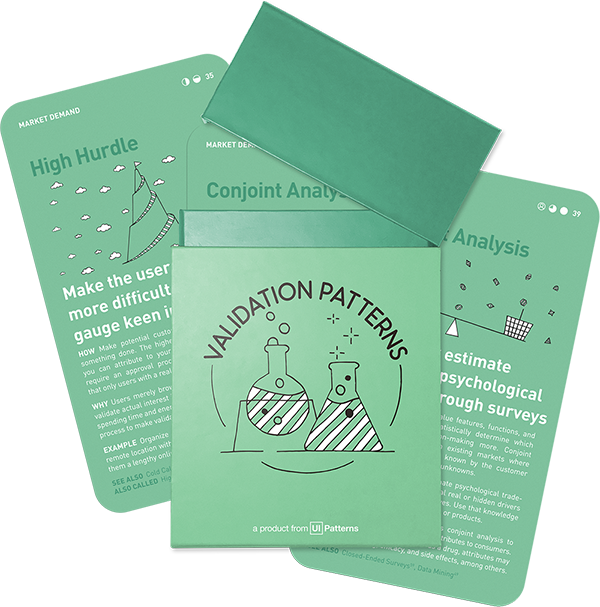Idea Validation: Problem
Crowdsourcing
Obtain input to a project from a large group of undefined people

How: Solicit contributions from an undefined public through external communities, rather than from existing employees or specific pre-contracted suppliers.
Why: Crowdsourcing decreases risk by increasing attempts. Tap into a diversity of skills and amount of labor you don't possess and do so with significantly less cost and risk than making additional hires. With crowdsourcing, you pay for the solutions, not the effort – the marketplace bears the cost of failure, not you.
Crowdsourcing decreases risk by increasing attempts
With the help of crowdsourcing, companies can have more tries at nailing product-market fit than they would have if they had only relied on their own internal product development lifecycle. By bringing in a larger volume of ideas down the innovation funnel at a higher pace than regular internal product development, chances of success are increased. Risk of not discovering a product fit for the market is decreased.
How crowdsouricng can help foster innovation
You can utilize crowdsourcing at all steps of the product development lifecycle. A few examples are:
- To create new ideas for new product offerings (from internal and external crowds)
- To create the best prototype that fulfills a product vision or idea
- To develop and execute the best core product experience
- To user test the final solution (with both internal and external crowds)
- To produce material needed for problem-solution fit (for example the Facebook 10-year challenge helped create material for face-recognition across ages)
- To produce content (for example when facebook asked users to translate its user interface)
- To come up with the best marketing campaign
Objective of the experiment
Crowdsourcing leverages the collective intelligence of a large group of people, typically from an online community, to solve problems, generate ideas, or complete tasks. This approach can significantly enhance innovation and productivity by tapping into a wide array of skills and experiences at a lower cost and with less risk than traditional hiring or contracting.
The key metrics for evaluating a crowdsourcing initiative focus on the quantity and quality of contributions, the diversity of ideas and solutions generated, cost and time efficiency, and the overall impact on project success.
Real life Crowdsourcing examples
Threadless
At Threadless, T-shirt designs are all submitted by members of the community. They submit designs, vote and the ones who get the most votes get produced. Co-founder, Jake Nickell, created the community to solve a problem first and foremost: to see the great artists’ work go from the screen and onto something tangible.
They started with one contest, which was a hit. As they held more contests, their community of artists grew as well, eventually into the thousands.
Duolingo
Duolingo help customers learn a new language for free, but in reality the platform crowdsources translation of commercial texts (books, etc.) from one language to another.
Source: Crowdsourcing Capitalists: How Duolingo's Founders Offered Free Education To Millions
Coca Cola
Marketers at Coca-Cola regularly crowdsource ideas for campaigns and their production - notably for social media and hashtags for content and ideas for “Where Will Happiness Strike Next?”.
A collection of 60 product experiments that will validate your idea in a matter of days, not months. They are regularly used by product builders at companies like Google, Facebook, Dropbox, and Amazon.
Get your deck!Related plays
- How crowdsourcing eliminates risk in innovation by Clinton Bonner
- The Difference Between Crowdfunding and Crowdsourcing by Clay Hebert
- What is crowdsourcing by Christine Zimmermann
- Crowdsourcing & The Lean Startup by Alan Gleeson
